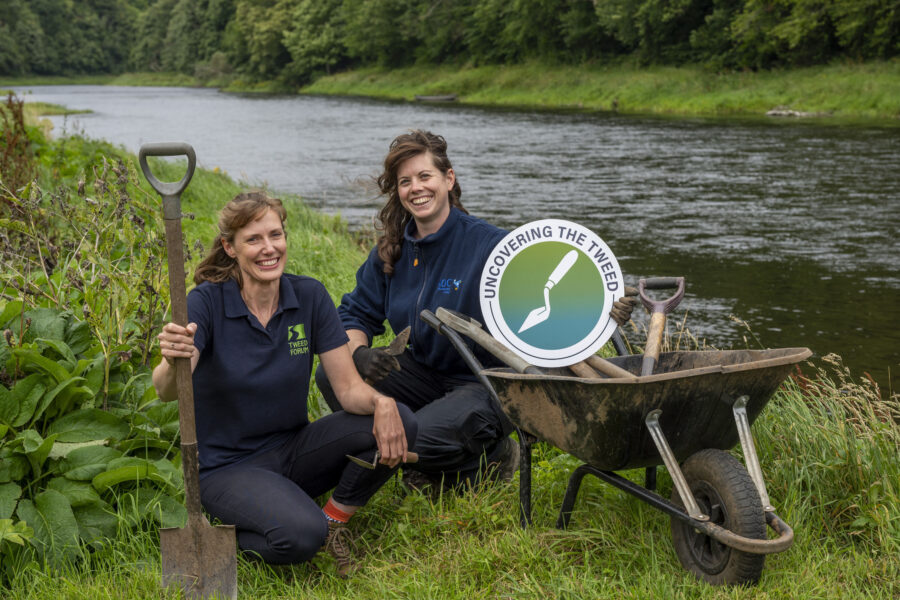The Destination Tweed river restoration project has launched a £360,000, three-year, community-based archaeology project to shed new light on important sites of activity along the river and surrounding area.
One of 13 Destination Tweed projects, Uncovering the Tweed will offer opportunities for people across the south of Scotland and north Northumberland to get involved in exploring the history of the Tweed and its past communities. The programme is being run by AOC Archaeology Group, which is already working with local people across the catchment to co-curate a programme of proposed activity.
Uncovering the Tweed will encourage involvement in researching, surveying and excavating sites from Moffat to Berwick. The inclusive project will also feature citizen science with opportunities for people to learn how to identify previously unknown archaeological sites from their own homes using web-based LiDAR technology. Specific projects within the programme will study a range of themes including historical river crossings, medieval towers, stone carvings, abandoned villages and the region’s industrial heritage. They will also investigate the prehistoric era along the Tweed and look at the broader historical landscape.
The first site identified for excavation is Adie’s Brae, a scooped settlement on Borders Forest Trust land at Ericstane near Moffat. Scooped settlements are enclosures that have been cut into the hillside. They are found exclusively in south-east and central southern Scotland and typically date to the Middle Iron Age (c.200BC-400AD). The excavation work will aim to accurately date the site, investigate the structure of the enclosure and explore any traces of buildings within the interior.
Uncovering the Tweed is being funded by Historic Environment Scotland, The National Lottery Heritage Fund and the Fallago Environment Fund.
Destination Tweed Project Officer, Charlotte Douglas, said; “From prehistoric settlements to Roman forts and medieval castles, the Tweed has witnessed centuries of human history. Our Uncovering the Tweed project will enable local people to work alongside a team of professional archaeologists to learn new skills and help us discover more about life on the river in the past. We’re excited about what will be uncovered.”
Susan O’Connor, Head of Grants at Historic Environment Scotland, said: “Uncovering the Tweed is a fantastic project that will have far-reaching positive outcomes across a range of audiences and communities. From topographical surveys and archaeological training to excavation skills and documentation of the built environment, the project will help further promote the diverse contribution of the historic environment. We’re thrilled to have awarded Destination Tweed £90,000 to support a project that will build a legacy of empowered volunteers and showcase the importance of making our heritage accessible for all.”
